Using DNA barcoding to identify honeybees across Berlin
In this project, researchers and students used DNA barcoding to investigate the genetic diversity of Apis mellifera in Berlin. Using Bento Lab for DNA extraction, PCR, and gel electrophoresis, they analysed samples from 30 hives across the city to identify honeybee subspecies and explore local variation.
Modern-day honeybee queen breeding and global transport of bee stocks means that subspecies of honeybees are constantly mixing globally. In 2024, a pilot project called BeeCode Berlin brought together scientists, educators, and citizens to uncover the hidden genetic diversity of honeybees across the city.
Thomas Sparks and Sílvia Carvalho of EcoCode DNA are passionate about enabling younger students to do hands-on science, make real discoveries, and contribute to our collective scientific knowledge.
Following an educational project on DNA barcoding of lichens, Tom and Silvia were looking for a project in 2024 that would provide a real scientific experience for local high school students. Their solution: a pilot project called BeeCode Berlin that aims to investigate the genetic identities of local honeybees while teaching DNA barcoding technology to students, through a citizen science approach.
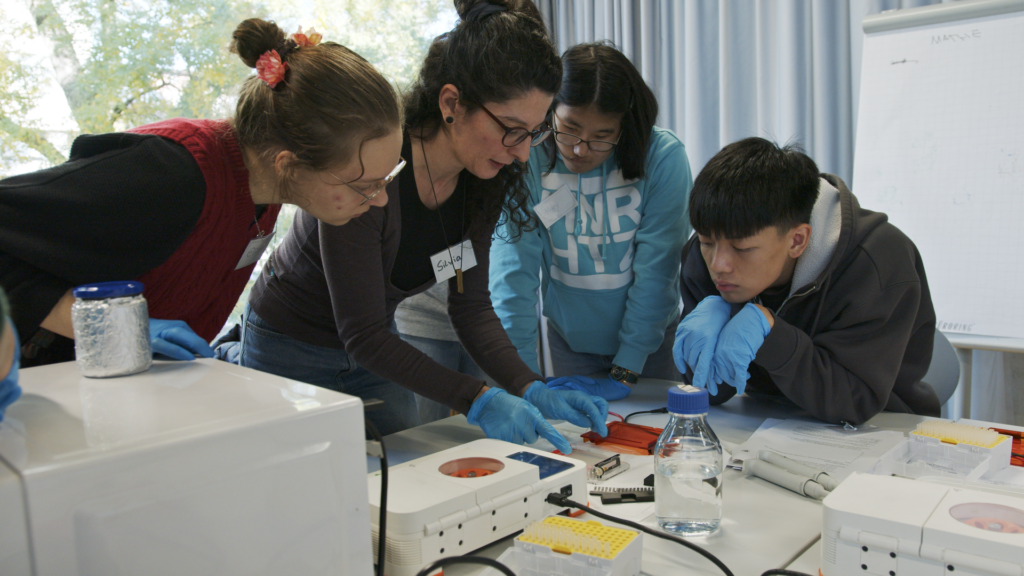
BeeCode workshop: co-organiser Sílvia Carvalho and students inspect a gel on Bento Lab
Providing real-life science experiences to high school students
The BeeCode project was designed to allow high school students to investigate an important scientific question with an unknown answer: “What is the genetic diversity of Berlin’s bees?”. It also aimed to strengthen collaborations between schools, scientific institutions, and community groups. The motivation behind the science was important as well, aiming to help ensure that Berlin’s domestic honeybee pollinators could continue to thrive.
With support from the IMPETUS program, funded by the European Union’s Horizon Europe, BeeCode was able to offer free workshops for high-school students and to engage directly in economically disadvantaged neighborhoods of Berlin. At the same time, BeeCode contacted Berlin beekeepers to gather samples for testing, receiving about 100 samples from 30 hives across the city.
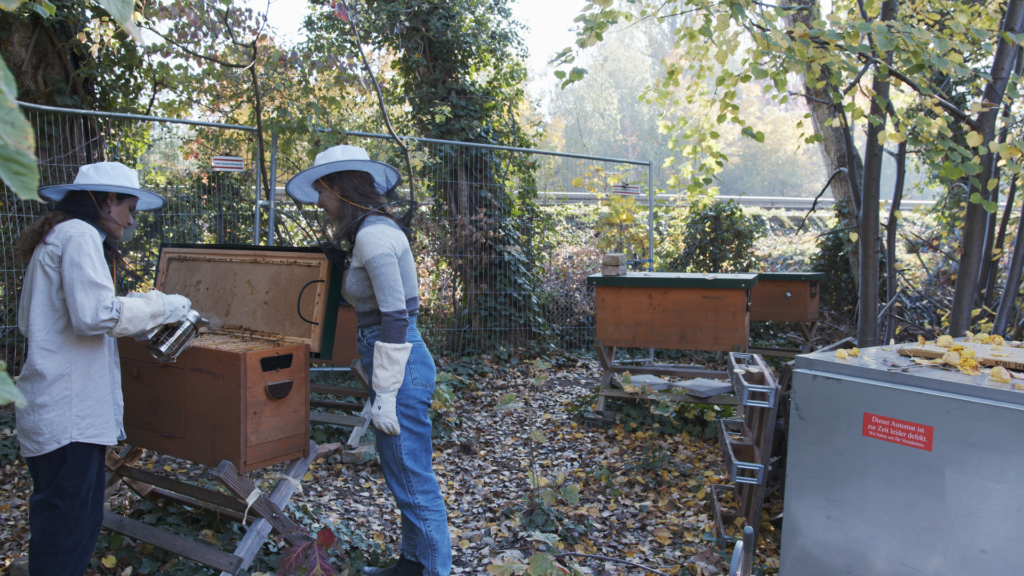
The Scientific Background
BeeCode’s suspicion at the start of the project was that Berlin’s domesticated honeybees could be a mix of subspecies due to the human-driven nature of honeybee domestication. Honeybee taxonomy is complex, and experts often debate their speciation and subspecies. However, the domesticated western or european honeybee is a single species (Apis mellifera), which is generally agreed to be split into six distinct lineages, in which multiple subspecies can reside in, shown in the figure below from Tihelka et al. (2020).
A. mellifera is thought to have originated in Africa, with the “A” lineage occupying most of the continent and considered the species’ historical center. From this center, honeybees expanded northward and diversified. The “M” lineage spread into northern and western Europe, producing subspecies like A. m. mellifera, which is also known as the European black bee. The “C” lineage settled in central and eastern Europe, including the Italian bee (A. m. ligustica) and the Carniolan bee (A. m. carnica). Further east, the “O” lineage occupied the Near East. Lastly, the “Y” lineage emerged in northeastern Africa and extended toward the Arabian Peninsula.
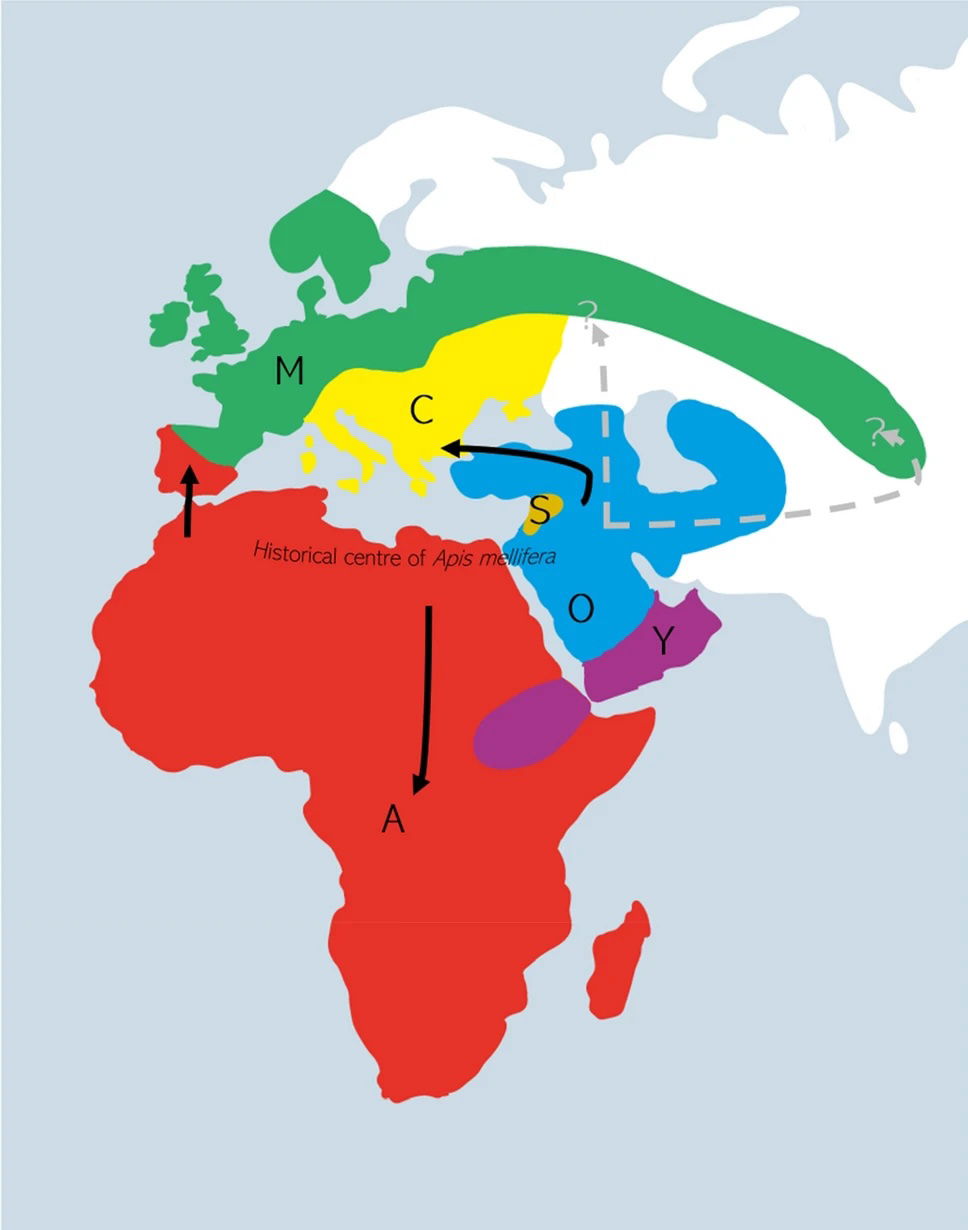
Why does the genetic diversity of honeybees matter?
Firstly, modern-day queen breeding and the global transport of bee stocks may result in Berlin’s domesticated honeybees being a melting pot of subspecies, and these practices risk outcompeting native subspecies such as the European black bee, that are hypothesised to be better adapted to local conditions.
Secondly, different subspecies may have different resistance to threats such as Varoa mites and viruses.
And thirdly, there is a risk of outbreeding into rare wild honeybee populations, and they may impact native genetic honeybee diversity and the survival of these populations.
Hands-on training and facilitating a real science experience
Towards the end of 2024, BeeCode Berlin ran a series of workshops for high school students at public libraries, teaching high school students to perform DNA barcoding on honeybees and then allowing them to work independently and identify bee subspecies.
BeeCode found that the portable design of Bento Lab was ideal for this project, allowing them to set up workshops in community centres close to schools, thereby minimising the distances students needed to travel and making it much more attractive to participants.
“We started in a fixed teaching lab space. A great lab, but outside the city and difficult to access. We began thinking: what if we could bring this directly to schools and communities? Many students can’t necessarily travel far to do a scientific experiment, but if it was next door, they might take part. We very quickly discovered Bento Lab, and that’s how we got started – we wanted to bring science projects directly to people.”
Dr Thomas Sparks
Students were taught hands-on lab techniques in DNA extraction, amplification (PCR), and agarose gel electrophoresis using Bento Lab. After getting successful PCR results, their DNA fragments were Sanger sequenced, and the students were guided through analysing their sequences using computer-based DNA sequence analysis (BLAST alignment and producing phylogenetic trees).
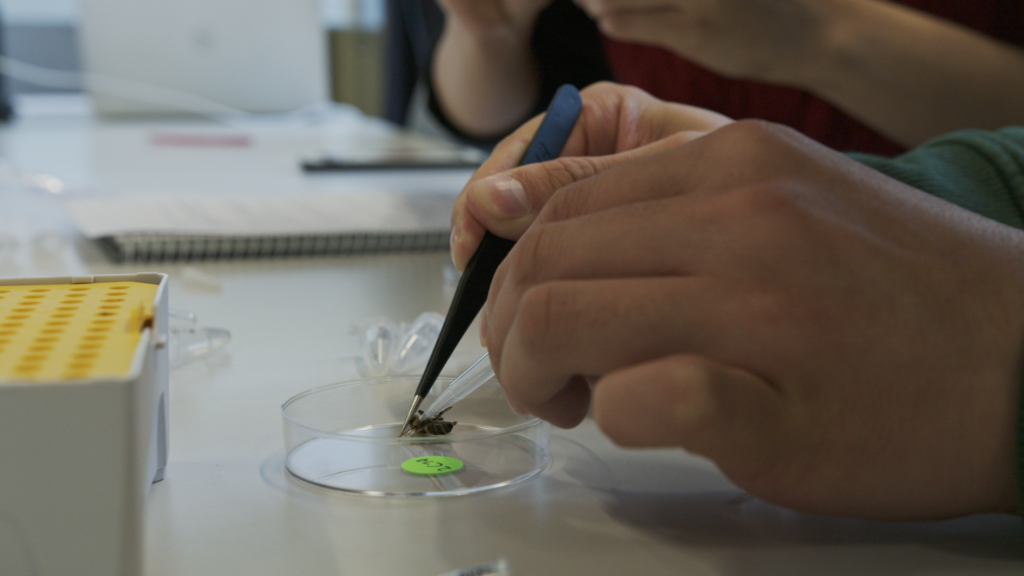
Preparing DNA samples from a honeybee
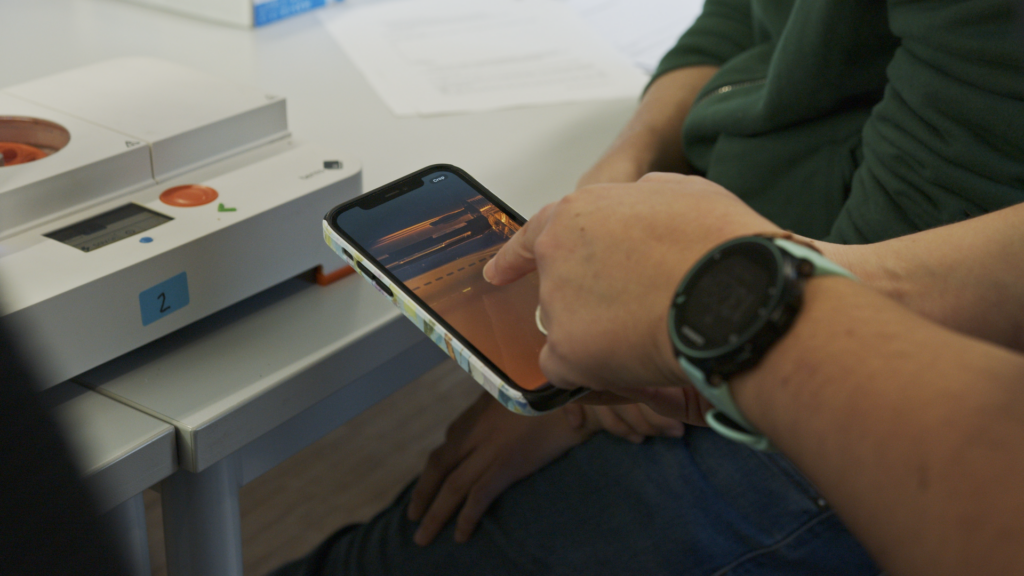
Discussing the results after gel electrophoresis
The real-life science experience extended to the final part of the workshops, when students were given real DNA sequences and asked to use the skills and tools they had learned to identify bee subspecies independently in a “hackathon”-like format. During this stage, students were doing all of the bioinformatic analyses, and producing their own results, making the activity into a genuine scientific research experience. The students then summarised the results into a poster format, and presented their results in a public presentation event.
“ After two weeks of full-time DNA barcoding with workshops and hackathons, the students gave a poster presentation to the public. And it was so impressive to see how well they did for their first scientific posters.”
Dr Thomas Sparks
Preliminary Results: Exploring Berlin’s Honeybee Subspecies
The students found that many of Berlin’s bees belong to the “C” lineage and the Carnica subspecies. This subspecies is native to the Balkans, and may be favoured by many beekeepers because of its gentle behaviour and ability to produce large quantities of honey.
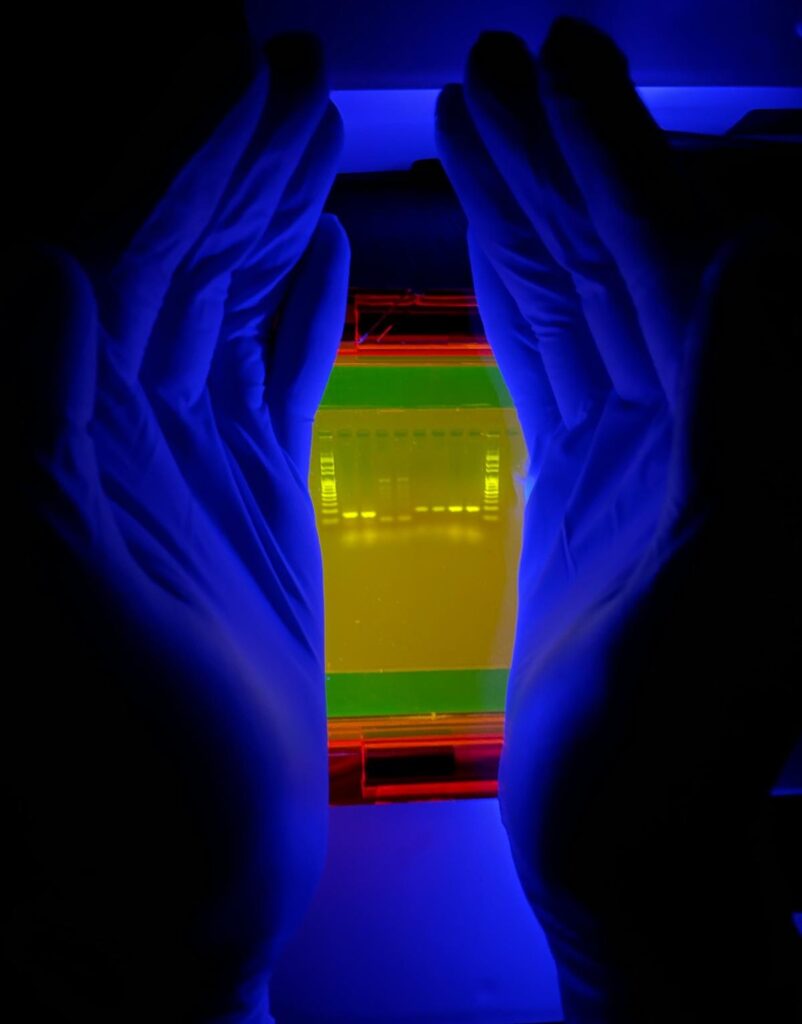
Viewing the honeybee DNA barcodes on the Bento Lab gel

Phylogenetic tree of 47 different honeybee samples
Crucially, evidence was found that a hive belonged to the M branch that includes the European black bee Additionally, the hive was shown to have a low pest count, though deeper sequencing and better observation of the hive, may yield to more intrigue into native breeding of honeybee subspecies. Overall this study highlights shortcomings in how the genetic diversity of honeybees is protected, though more data is needed before drawing strong conclusions.
As part of this work, DNA barcode sequences produced by the students will be uploaded to public DNA reference databases, allowing students’ data to make a permanent contribution to collective scientific knowledge.
“DNA barcoding Apis mellifera was a real science experience for the students — using creativity and strategy to get results for a question where they didn’t yet know the answer. The Beecode workshop gave the students a true sense of what actual lab science is about, which was a unique opportunity.”
Dr Thomas Sparks
Future plans
In the future, BeeCode aims to partner up with schools for longer periods, with research ideas such as studying wild pollinators and the full mitochondrial sequences, to increase the resolution of species and subspecies detection.
They are also considering pollen metabarcoding to investigate what flora the bees are feeding on, and whether there is any competition for food with local and solitary bees. They are even thinking about sequencing DNA from honey itself!
If you want to find out more about BeeCode and EcoCode, you can read about their work on their website.
Photos and the phylogenetic tree by Beecode Berlin.
FAQ
What gene region is used for DNA barcoding honeybees?
The project targeted the mitochondrial COI gene, a standard region used for species and subspecies identification in insects, including Apis mellifera.
How does DNA barcoding contribute to honeybee conservation efforts?
DNA barcoding makes it possible to identify honeybee subspecies and monitor their distribution. This helps detect the presence of locally adapted or threatened lineages, track the impact of imported bees, and inform breeding or protection strategies. By generating genetic data, barcoding supports efforts to maintain biodiversity, strengthen disease resistance, and preserve traits adapted to local environments.
Getting Started with Honeybee DNA Barcoding
If you’re interested in performing DNA barcoding of honeybees, Bento Lab offers portable tools for DNA extraction, PCR, and gel electrophoresis. Learn more about protocols and best practices on our DNA barcoding resources page.
Looking for advice on using Bento Lab?
Book a free consultation or ask a question.